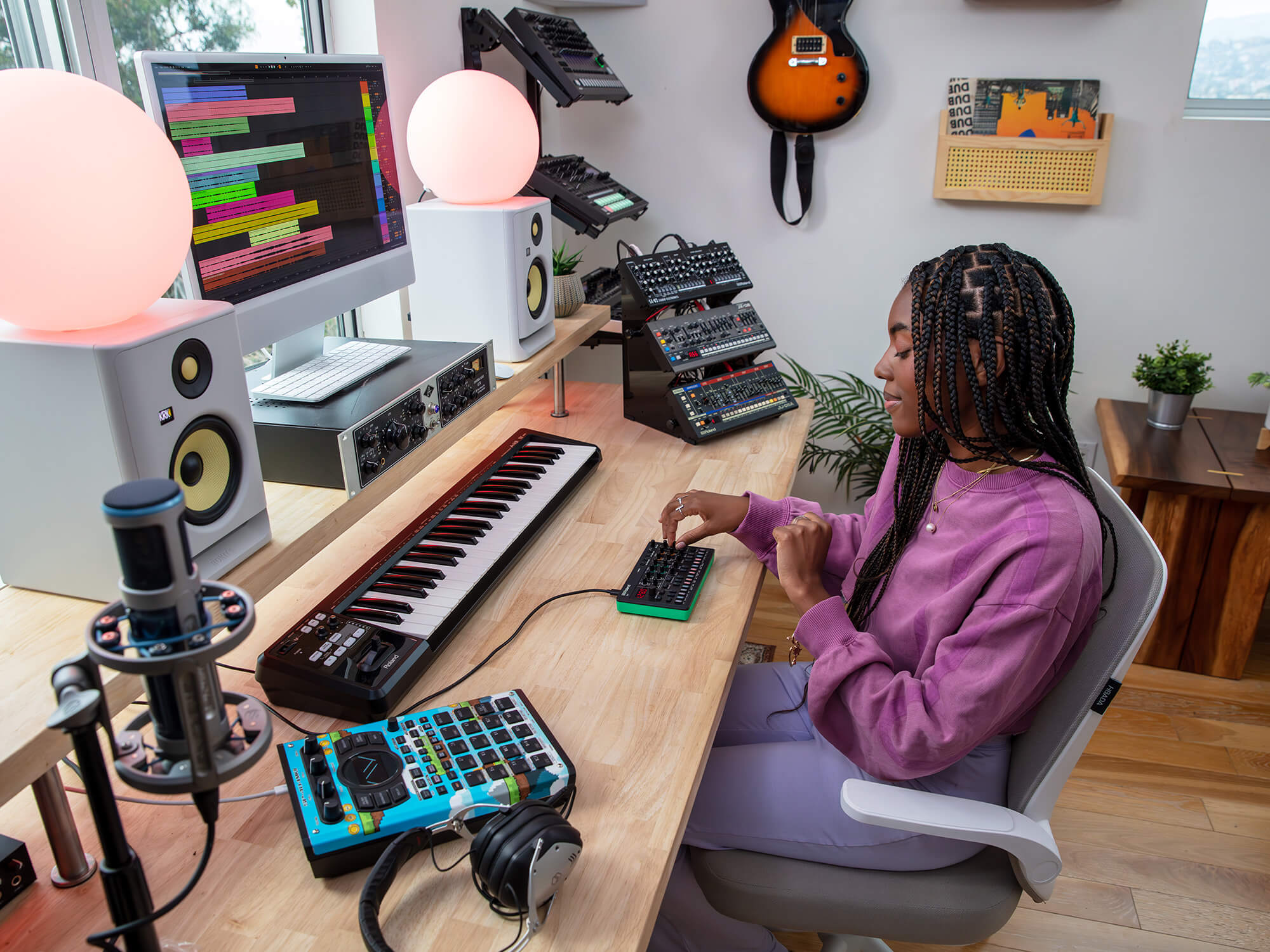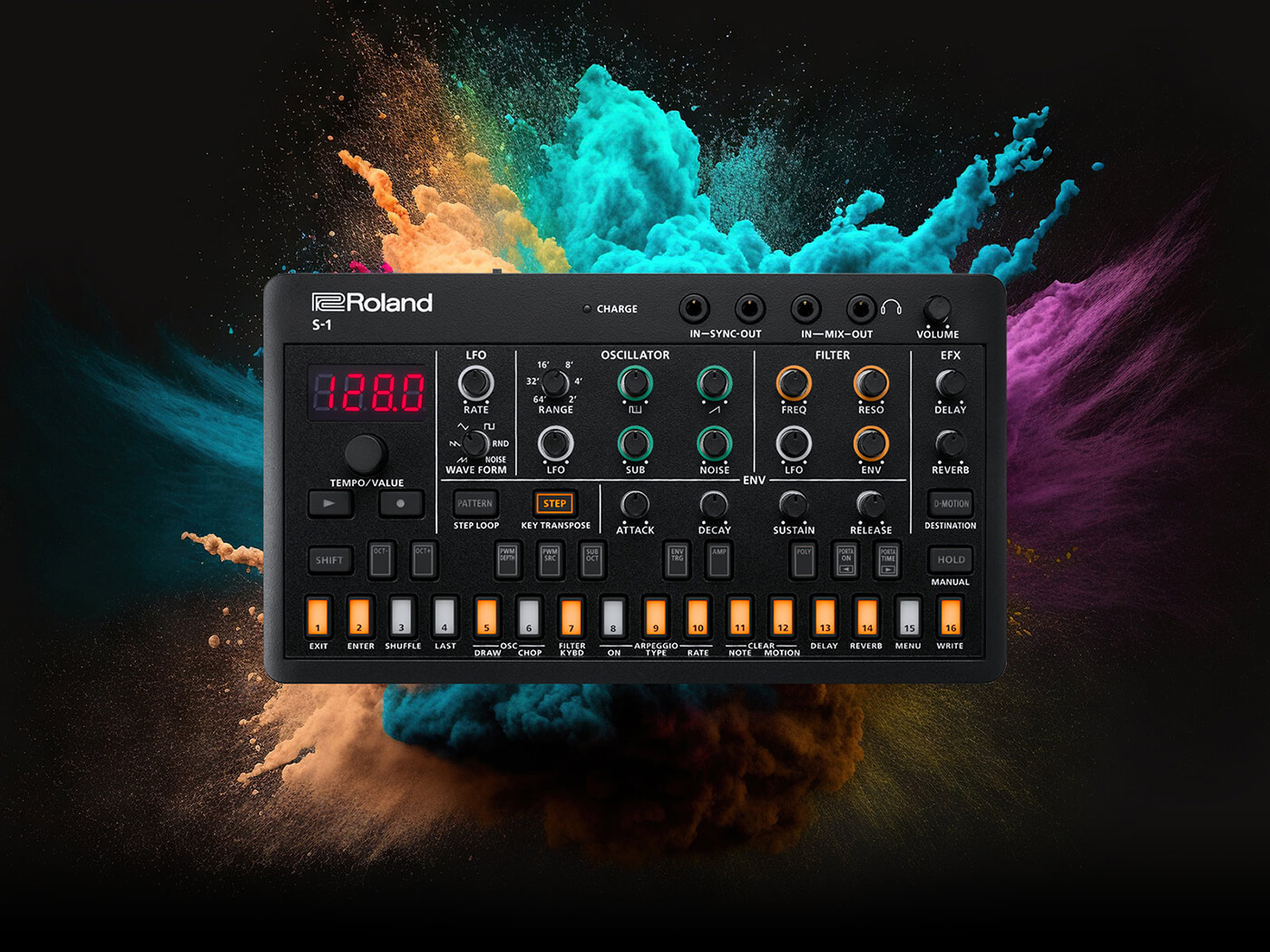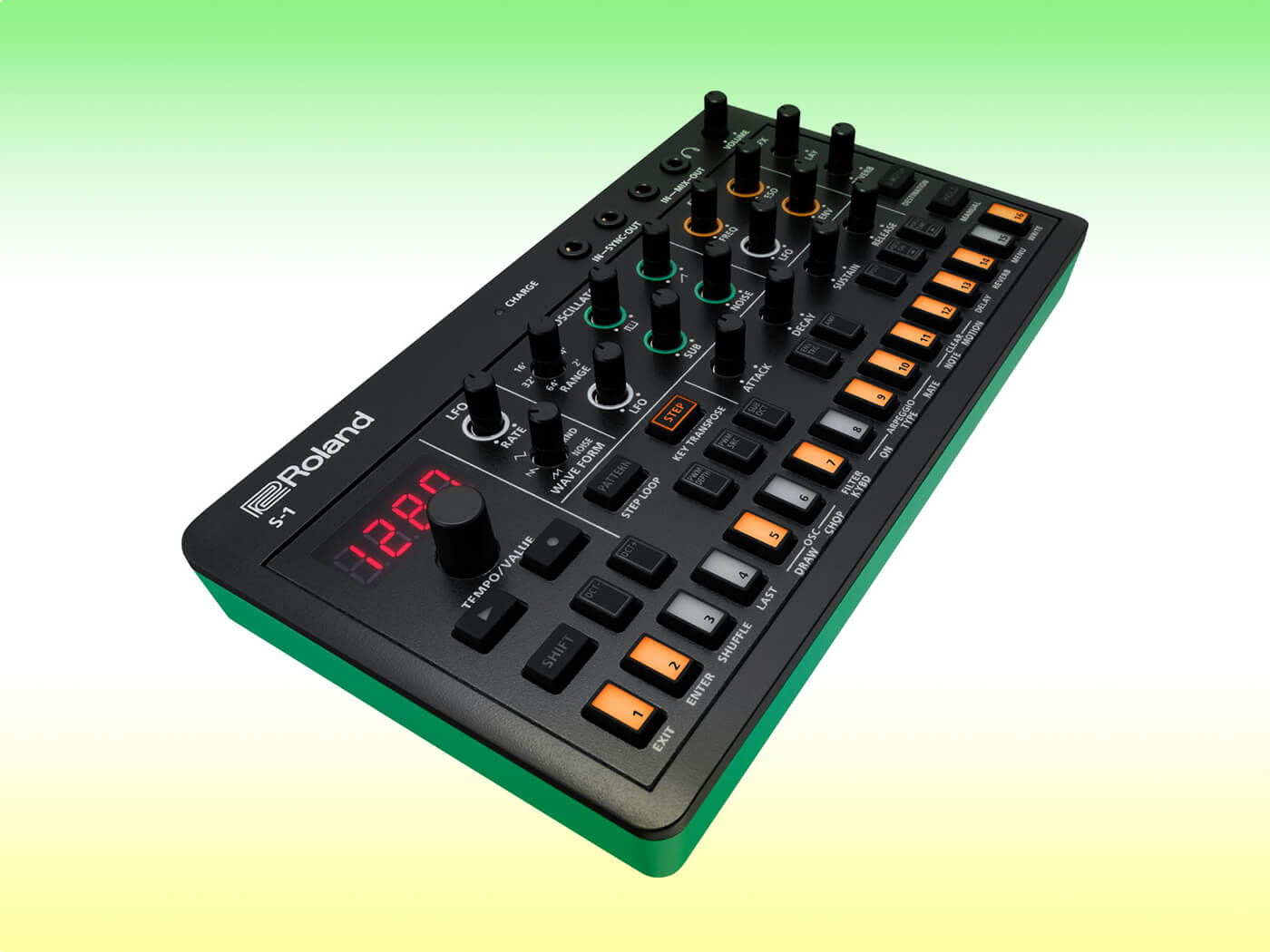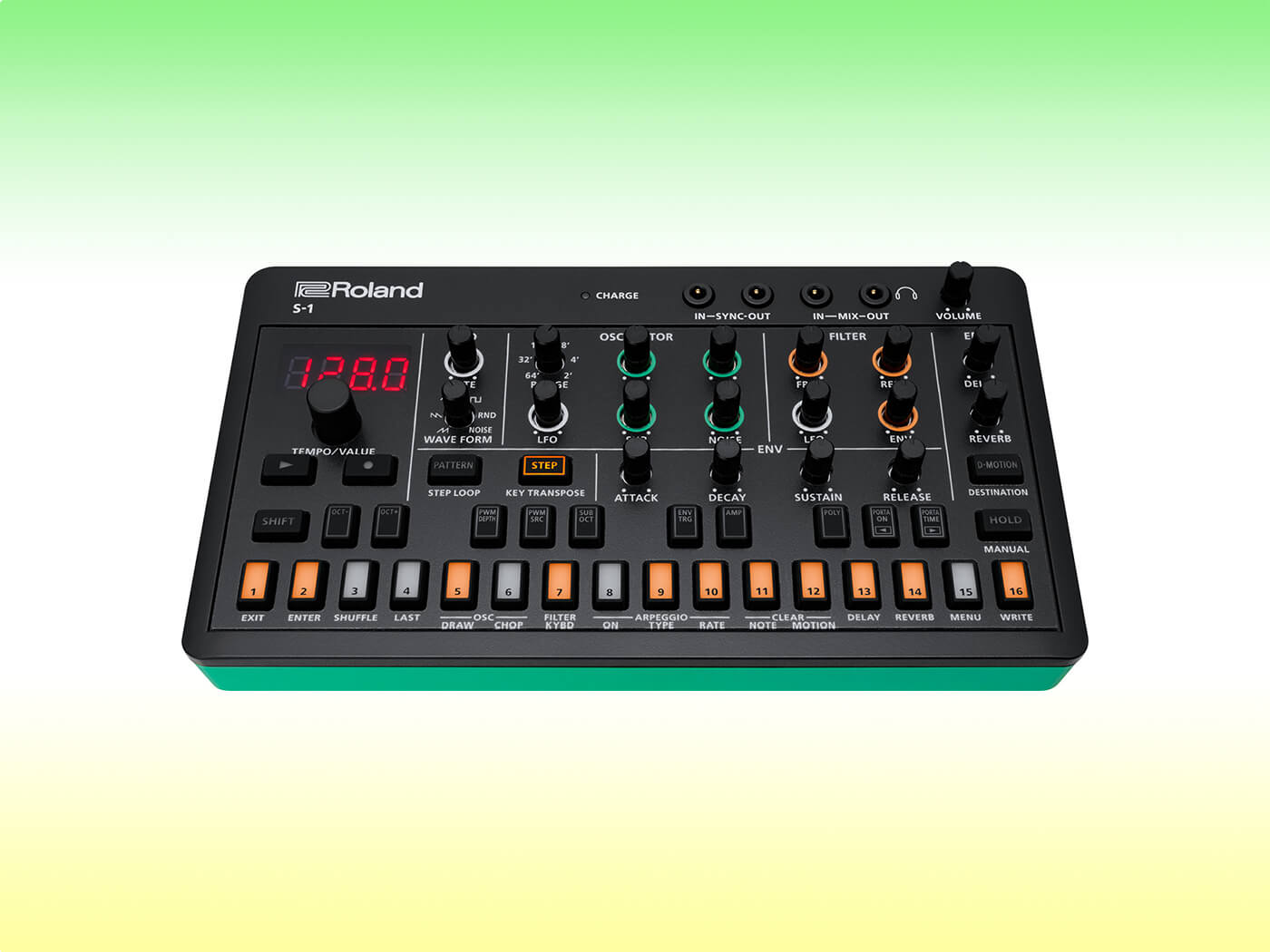Roland S-1 unleashes the full potential of the brand’s mini instruments
The next instalment in Roland’s miniature AIRA Compact range channels the sound of the iconic SH-101. Will it live up to the legacy?

Review Overview
Our rating
8
Our verdict
⊕ Huge, impressive sound
⊕ The most flexible, editable instalment of the AIRA Compact range so far
⊕ Quality effects
⊕ Easy-to-access fundamental features
CONS
⊖ Can be difficult to navigate with a seven-segment display and multiple menus
⊖ Not always clear from the panel what the shift button’s function is
⊖ Waveform editing is a little lost on such a scaled-down interface
Upon its arrival last year, Roland’s AIRA Compact range represented something of a gamble for the company. Of all the reboots, reiterations and revisions to the Roland pantheon of iconic electronic instruments – a modus operandi that has seemingly sustained the company’s product range over the past few years – never before had it attempted to squeeze some of its most loved sound signatures into such tiny packages. Make no mistake, though – these instruments sound a lot bigger than they look.
Three iterations were launched simultaneously to kick things off: the T-8 Beat Machine takes after the sound of the inimitable TR-808 drum machine, with a little of the TB-303’s acidic bass thrown in for good measure; the J-6 Chord Synth channels the spirit of the Juno-60 and is capable of producing lush pads, rich chords and dynamic sequences to boot; the E-4 Voice Tweaker doesn’t base its identity on any single predecessor, yet still makes its mark with a versatile set of dynamic vocal effects.

Now comes the next chapter in the AIRA Compact story, with a similarly pithy name: the S-1 Tweak Synth, which is based on the classic SH-101, one of Roland’s most revered models and, like many Roland instruments, a key player in the evolution of dance music towards the end of the twentieth century.
Roland has settled on a very satisfying style with these instruments. Each is a different colour on the lower chassis and all have identical upper panels, with two 3.5mm jack sockets for sync and mix in/out, plus a single mini volume knob. This is in addition to the rear panel’s MIDI sockets, USB-C port and power switch.
The colour of choice for the S-1 is a cool green, which, as with the other AIRA Compact units, can give it a slightly toy-like aesthetic. At the same time, though, the AIRAs look inviting and accessible, and in this sense, their friendly appearance is well-conceived. Each is light in weight, nicely made, affordable and supremely portable. They’re also backpack-friendly, with lithium-ion batteries chargeable over USB. We’re happy to see Roland hasn’t wasted valuable resources by building speakers into the units – something that generally adds little value since they almost always sound pathetic.

The S-1 promises to be the closest thing so far to a ‘proper’ synthesizer in the AIRA Compact range, making expected use of Roland’s Analog Circuit Behavior (ACB) digital technology to promise authentic recreation of the SH-101’s tone and response. While the SH-101 was a mono synth, the S-1 is a four-voice polyphonic instrument and takes almost no physical design features from the original. This is respectable; Roland (as with many stalwart developers) can at times veer dangerously close to purveying nostalgia in instrument form. But the S-1, like the J-6, opts purely to channel the sonic signature of its predecessor and not focus on its retro aesthetic.
While the panel seems to offer a fairly conventional set of subtractive synth controls, there’s a whole lot more to be found under the hood. On the surface, its oscillator section offers blendable square and saw waves alongside an octave selector and noise generator. Next to this is a filter section with simple controls for cutoff, resonance and envelope amount, corresponding to the single ADSR envelope below. On the left of the panel is a simple modulation section with a single, wave-variable LFO, which can also be set to random or to noise shapes, and is routable to either filter cutoff or oscillator frequency. On the right are controls for delay and reverb.

A rubberised miniature keyboard occupies the lower half of the S-1, which is fairly useful – if not particularly playable – but functions more usefully as a menu system, a preset selector or a transport control for its 64-step sequencer. So far, so good. The S-1 does a fine job of keeping major parameters up-front and easy to access, it sounds surprisingly brilliant and also offers itself up to being pushed nicely – the LFO can more than hit audio rate and the filter can really howl at high resonance settings. There’s a wild side to this thing that at times rattles its miniature cage.
Under the surface, the S-1 gets much deeper. For one, it boasts an impressive seven reverb and four chorus types, which all sound superb and put the stereo output to good use. The S-1 can record parameter changes into its sequencer – including effects – endowing sequences with incredible dynamism atop simple patterns of notes. Another impressive aspect of its playability is its D-Motion accelerometer, à la Teenage Engineering’s OP-1 which allows it to be physically tipped and turned in two dimensions, influencing any two of several parameters, from panning to filter cutoff.

The S-1’s oscillator Draw and Chop functions really make the synth stand out. An ambitious addition by Roland, it divides waveforms into 16 steps to be edited and sculpted in depth via the sequencer buttons. This adds harmonic richness and multiplies wave cycles for some complex sounds that punch well above the S-1’s weight. It rewards experimentation, but takes some getting-used-to, since ultimately wave editing is certainly best done with an oscilloscope to visualise things. The S-1 cannot provide this, of course, with only a simple four-digit, seven-segment display. Limitations of the display can lead to some confusion, since it has so many abbreviated menu headings and button-based navigation systems to work through with minimal visual cues, so it’s advisable to keep the manual on hand, at least when first getting to know it.
While the AIRA Compact range hinted at huge potential from the outset, it’s in the S-1 that this potential is beginning to be fully realised. The other Compact units allude to genuine attitude but offer what sometimes feels like scaled-down functionality. The S-1, however, feels more self-sufficient, deeper, grittier and more powerful. It raises the bar for this series with considerable style.
Key features
- Price: £175 (street price)
- 4-voice analogue-style, digital synth
- Onboard sequencer and arpeggiator
- Square and saw wave oscillator with wave variable LFO
- D-Motion accelerometer for modulating with physical movement.
- Oscillator Draw and Chop for complex waveform editing